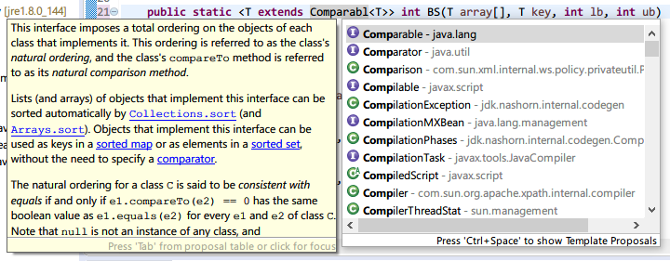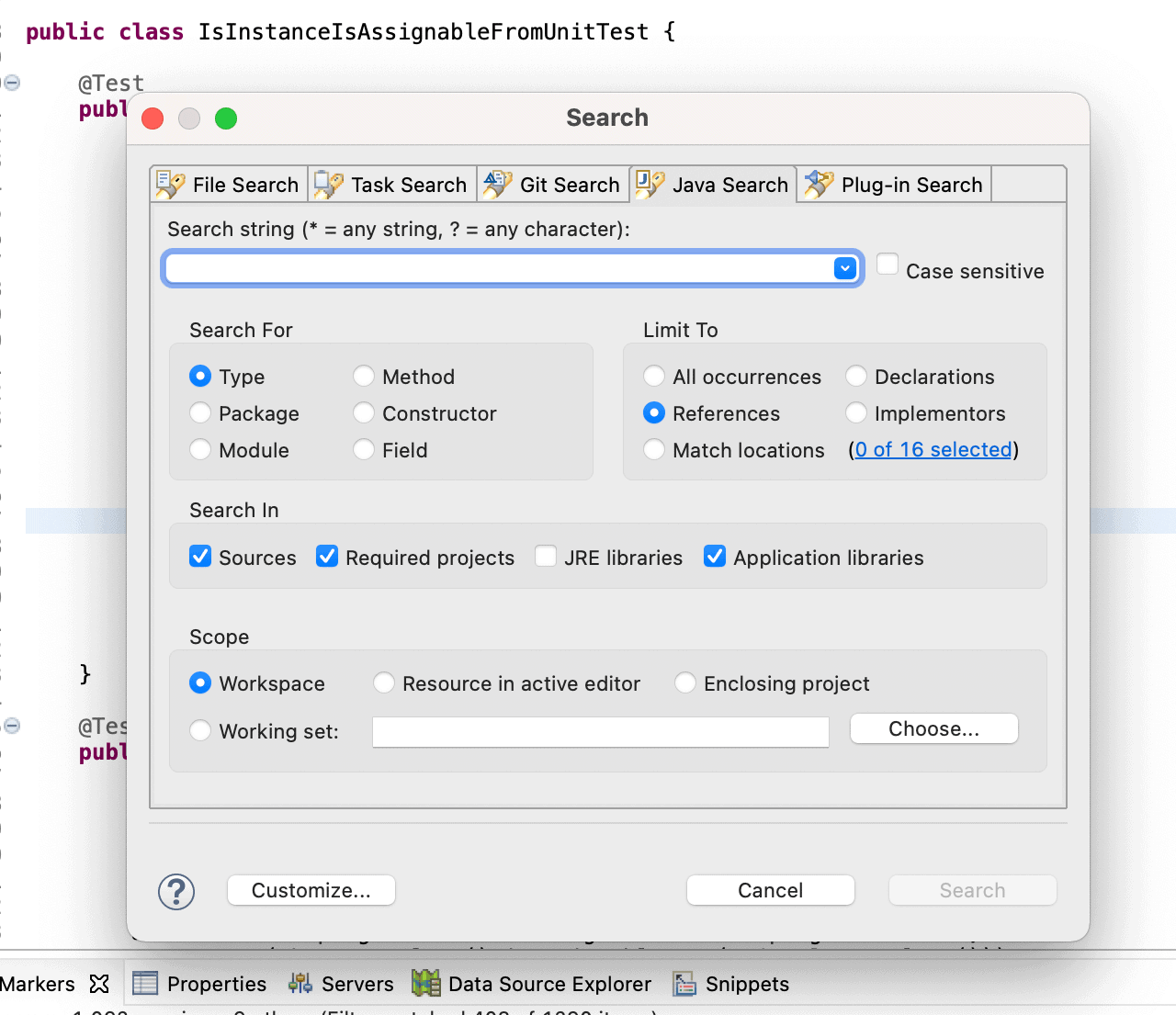

- #Shortcuts for eclipse java run for mac for mac os x#
- #Shortcuts for eclipse java run for mac code#
- #Shortcuts for eclipse java run for mac Pc#
Specifying the Java virtual machine Here is a typical Eclipse command line: eclipse -vm c: jdk7u45 jre bin javaw Tip: It's generally a good idea to explicitly specify which Java VM to use when running Eclipse. For shared or multi-workspace installs you must explicitly specify the location for your workspace using the dialog (or via the ' -data' command line argument). This workspace directory is used as the default content area for your projects as well as for holding any required metadata. If you do not specify otherwise, Eclipse creates the workspace in your user directory. The workspace is the directory where your work will be stored. Selecting a workspace When the Workbench is launched, the first thing you see is a dialog that allows you to select where the workspace will be located. Note that setting memory sizes to be larger than the amount of available physical memory on your machine will cause Java to 'thrash' as it copies objects back and forth to virtual memory, which will severely degrade your performance. The maximum permanent generation size is increased using the -XX:MaxPermSize= argument: eclipse -vmargs -XX:MaxPermSize= This argument may not be available for all VM versions and platforms consult your VM documentation for more details. When the VM runs out of permanent generation memory, it may crash or hang during class loading. The default maximum is 64 megabytes, but more may be needed depending on your plug-in configuration and use. When using an Oracle JRE, you may also need to increase the size of the permanent generation memory.

Thus, to increase the available heap memory, you would typically use: eclipse -vmargs -Xmx with the value set to greater than '384M' (384 megabytes - the default). Eclipse allows you to pass arguments directly to the Java VM using the -vmargs command line argument, which must follow all other Eclipse specific arguments.

However, depending on the JRE that you are running, the number of additional plug-ins you are using, and the number of files you will be working with, you could conceivably have to increase this amount. That you'd like to export, and can remove the category when no longer needed. You will only want to use this for the mail, contacts etc.

Mark the items you want to export with the category just created:.This should be ample for all typical development tasks. Allocating enough memory and solving OutOfMemoryErrors By default, Eclipse will allocate up to 384 megabytes of Java heap memory.
#Shortcuts for eclipse java run for mac for mac os x#
Special instructions for Mac OS X are listed. Note: Set-up on most other operating environments is analogous. If installed at c: eclipse-SDK-4.4-win32, the executable is c: eclipse-SDK-4.4-win32 eclipse eclipse.exe. On Windows, the executable file is called eclipse.exe, and is located in the eclipse sub-directory of the install. > Running Eclipse After installing the Eclipse SDK in a directory, you can start the Workbench by running the Eclipse executable included with the release (you also need at least a JDK6 or JRE 6, not included with the Eclipse SDK). You can add additional keyboard shortcuts for the action, add mouse shortcuts to associate an action with a mouse click, or remove current shortcuts. Actions list: Right click on an action to modify it. Default keyboard shortcuts for Windows/Linux and Mac operating systems. When you use our site selected companies may access and use information on your device for various purposes.
#Shortcuts for eclipse java run for mac Pc#
Ecomputer sys external region free dvd burner writer rom player drive for pc and mac computer.
#Shortcuts for eclipse java run for mac code#
In this article, we summarize a list of shortcut keys which are useful for editing Java code in Eclipse IDE. 25 Eclipse Shortcut Keys for Code Editing.


 0 kommentar(er)
0 kommentar(er)
